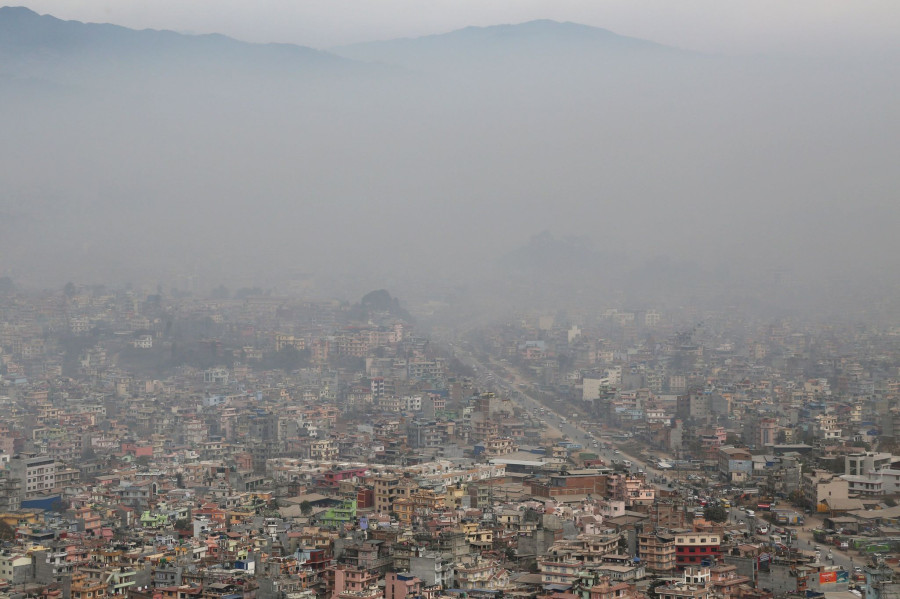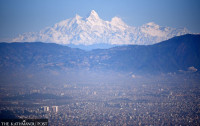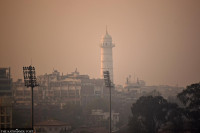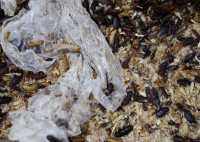Climate & Environment
The winter is going to be hot and dry, met office says
In the past few days, some places in the country recorded rise in average temperatures by as much as 8 degrees Celsius. Winter Climate Outlook of meteorology office predicts up to 50 percent chance of less than normal rainfall this winter.
Chandan Kumar Mandal
Westerly disturbance during early and middle of last week led to a few days of cold weather in the western parts of the country with snow in the high mountains and the temperatures plummeting in Kathmandu Valley and the Tarai.
Since then the temperature has been increasing steadily.
It may seem unusual but for meteorologists it has not come as a surprise.
The weather of late has been in line with the Winter Climate Outlook of the Department of Hydrology and Meteorology for this winter (December 2020-February 2021) with prediction that the rainfall would be less than normal and the average temperatures would see a surge in this period.
“We have seen that the maximum temperature at many stations has gone up significantly since last week,” said Indira Kadel, a senior meteorologist with the department. “At many stations, mainly in Tarai districts, the average temperature has gone up by as much as 8 to 9 degrees Celsius.”
The average temperature and average rainfall of any weather station in Nepal is calculated as the average recorded between 1981 and 2010 for any given time.
While Nepalganj and Dhangadi have recorded a rise of more than 8 degrees Celsius and Bhairawa and Janakpur has seen 6 degrees Celsius rise compared to the average in the last several days.
It is not just the temperature that has been unusual, but it has been dry too so far this winter.
“There has not been rainfall in the last four months during the post-monsoon, which began in October, except for a few places in Sudurpaschim and Karnali Province,” said Kadel. “Apart from some rain in the far-western region, which also caused snowfall in the northern regions, there was no rainfall in the mid-hills and eastern part of the country this winter.”
The department’s outlook predicts a continuation of a warm and dry winter.
Kadel, who is also the chief of the Climate Analysis Section of the department, gives two possible reasons behind lower rainfall and increasing temperature.
First, there is a less westerly disturbance, which carries cold wind responsible for rainfall during the winter season. Second, the increased level of pollution in the country has surged the mercury level up.
The less westerly disturbance is a result of La Niña, a weather pattern that occurs in the Pacific Ocean, according to meteorologists.
“As there was less impact of westerly disturbance, there could not be adequate rainfall and snowfall in the mountain region,” said Kadel. “With no rain, the weather could not clean up the air and it remained hazy. As a result, the pollution level went up massively, trapping the pollutants and the temperature. In short, lack of rain due to weaker westerly disturbance also led to temperature rise.”
Last Monday evening, Kathmandu Valley was the most polluted city in the world, overtaking cities like New Delhi and Mexico City, according to IQAir, a Swiss group, which records real-time air pollution across the world.
“Had there been the rain on time, it could have washed out the atmosphere and pollutants would come down and there would not be a rise in temperature” said Kadel.
Last winter season, the country had witnessed higher than the normal rainfall across the country.
In contrast, the department’s winter climate outlook predicted that northern areas of Sudurpaschim Province and northwestern areas of Karnali Province have 40-50 percent probability of receiving less than the normal rainfall this winter.
Similarly, other areas of the country have nearly 40 percent probability of receiving less than the normal rainfall during the same period, December to February.
In the case of temperature, the outlook predicts a 50-60 percent probability of increase in average temperature this winter in Province 1, Province 2, Bagmati Province, the majority of Sudurpaschim Province, northern Gandaki Province and central and northern areas of Karnali Province.
As for the rest of the country, there is a 40 percent probability of it witnessing a spike in average temperature this winter.
“Using different meteorological models, we make predictions with varied probability. The higher the probability, the stronger the chances of weather prediction turning true,” said Kadel.
Such weather prediction allows the general public to plan their activities, according to her.
“Initially, people experienced an early drop in minimum temperature and felt winter chill earlier this year. Now, people are complaining of the hot temperature which was also contributed by the pollution level,” said Kadel.
It is not just the Nepal’s meteorologists that have predicted a warm and dry winter in the country but also South Asian ones.
The 18th session of the South Asian Climate Outlook Forum, a consortium of meteorologists and hydrological experts from South Asia, held virtually on November 23, had predicted a “below normal” winter rainfall and “above normal” temperature for the country.
Winter rainfall, which occurs because of the westerly disturbance, contributes nearly 3.5 percent of the country’s annual rainfall.
The monsoon rainfall starts in the east and comes from the Bay of Bengal.
Despite making a small proportion of the country’s total rainfall, winter precipitation is considered valuable for winter crops, especially in high mountains where snow provides much-needed moisture to the crops for a more extended period of time.
According to Madhukar Upadhya, a climate change expert and watershed management practitioner, winter rain has always been valuable for the country’s farmers and highlanders.
“Wheat is primarily a winter crop. It can not grow without water. When there are not adequate irrigation options on the ground, winter rain comes as the saviour for farmers,” Upadhya told the Post. “Besides, there are different grasses in this season for which rain is required.”
“There is an old aphorism that says timely winter rain means enough for the rest of the year,” he said.
Precipitation in winter also deposits snow in the mountains.
“Winter rain is the source of depositing snow on the mountains,” said Upadhya. “While the monsoon rain is washed down and snow melts, snowfall in winter restores snow on the peaks.”




 5.39°C Kathmandu
5.39°C Kathmandu








%20(1).jpg&w=300&height=200)

